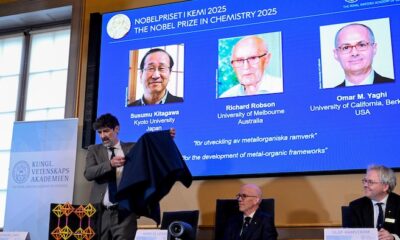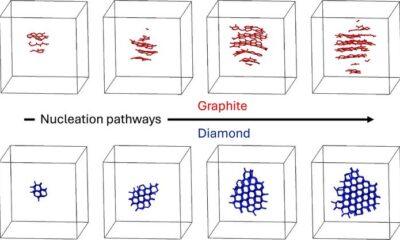Science
Physicist Explores New Ways Stars Create Elements in ‘i-process’

Researchers have identified a new method through which stars create elements, expanding our understanding of cosmic nucleosynthesis. Dr. Anna Martinez, an experimental physicist at the University of California, Berkeley, recently discussed this groundbreaking discovery known as the “i-process,” or intermediate process, which suggests that elements may form in ways previously uncharted by scientists.
Traditionally, scientists have understood element formation primarily through two established processes: the slow neutron capture process, or s-process, and the rapid neutron capture process, or r-process. These processes describe how atomic nuclei heavier than iron capture neutrons until one of those neutrons decays, resulting in the formation of heavier elements. While the s-process occurs over a long timeframe and the r-process happens in a much shorter span, the i-process fills a critical gap in our knowledge.
Unveiling the i-process
The i-process is characterized by a more moderate neutron capture rate, which can occur in environments not previously associated with element forging. Dr. Martinez explains that this new process could take place in certain types of stars, such as those undergoing instability or in specific supernova events. This discovery could lead to the formation of unique isotopes not produced by the s-process or r-process.
Dr. Martinez highlighted the significance of this research during a recent lecture on March 15, 2024. “The i-process reveals that stars are capable of forging elements in ways we never anticipated,” she stated. “This not only alters our understanding of stellar evolution but also informs us about the chemical makeup of the universe.”
Implications for Element Understanding
Elements forged in stars have significant implications for various fields, including chemistry, geology, and even economics. The metals that make up everyday items—ranging from the nickel and copper in coins to the gold and silver in jewelry—originate from these stellar processes. Understanding how these elements form can provide insights into their distribution and abundance on Earth.
Dr. Martinez’s findings could also influence the fields of astrophysics and cosmology. By understanding the i-process, scientists may better predict the presence of certain isotopes in the universe, which can lead to a deeper understanding of how elements evolve over time and affect the formation of planets and life.
The research is still in its early stages, but preliminary results are promising. As scientists continue to explore the i-process, the potential for new discoveries about the universe’s chemical landscape grows. The implications of this work extend beyond scientific curiosity; they may also impact how we view the origins of the materials that comprise our world.
Dr. Martinez’s groundbreaking research serves as a reminder of the complex and dynamic processes occurring in our universe. As these studies advance, the scientific community eagerly awaits the next revelations that may emerge from this fascinating area of astrophysics.
-

 Entertainment3 months ago
Entertainment3 months agoAnn Ming Reflects on ITV’s ‘I Fought the Law’ Drama
-

 Entertainment4 months ago
Entertainment4 months agoKate Garraway Sells £2 Million Home Amid Financial Struggles
-

 Health3 months ago
Health3 months agoKatie Price Faces New Health Concerns After Cancer Symptoms Resurface
-

 Entertainment3 months ago
Entertainment3 months agoCoronation Street’s Carl Webster Faces Trouble with New Affairs
-

 Entertainment2 months ago
Entertainment2 months agoWhere is Tinder Swindler Simon Leviev? Latest Updates Revealed
-

 Entertainment4 months ago
Entertainment4 months agoMarkiplier Addresses AI Controversy During Livestream Response
-

 Science1 month ago
Science1 month agoBrian Cox Addresses Claims of Alien Probe in 3I/ATLAS Discovery
-

 Entertainment4 months ago
Entertainment4 months agoKim Cattrall Posts Cryptic Message After HBO’s Sequel Cancellation
-

 Entertainment2 months ago
Entertainment2 months agoOlivia Attwood Opens Up About Fallout with Former Best Friend
-

 Entertainment3 months ago
Entertainment3 months agoMasterChef Faces Turmoil as Tom Kerridge Withdraws from Hosting Role
-

 Entertainment4 months ago
Entertainment4 months agoSpeculation Surrounds Home and Away as Cast Departures Mount
-

 World2 months ago
World2 months agoCole Palmer’s Mysterious Message to Kobbie Mainoo Sparks Speculation





















